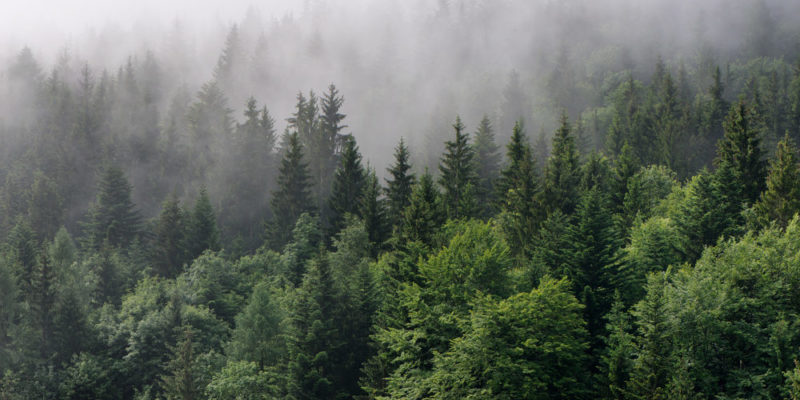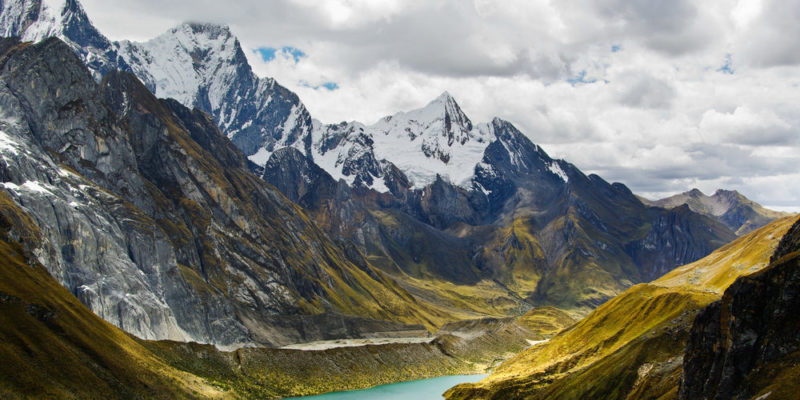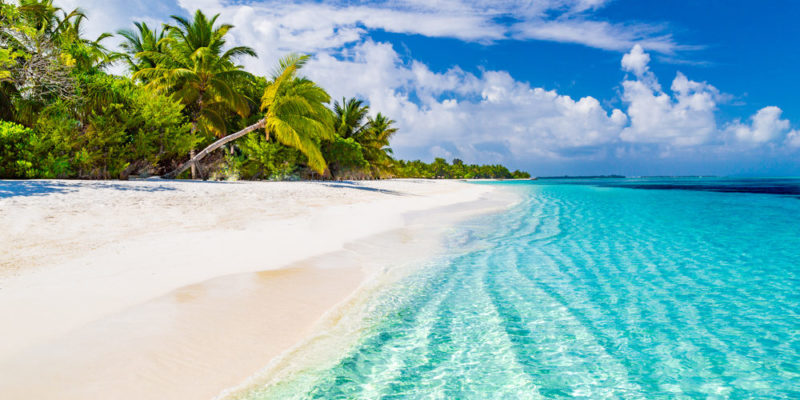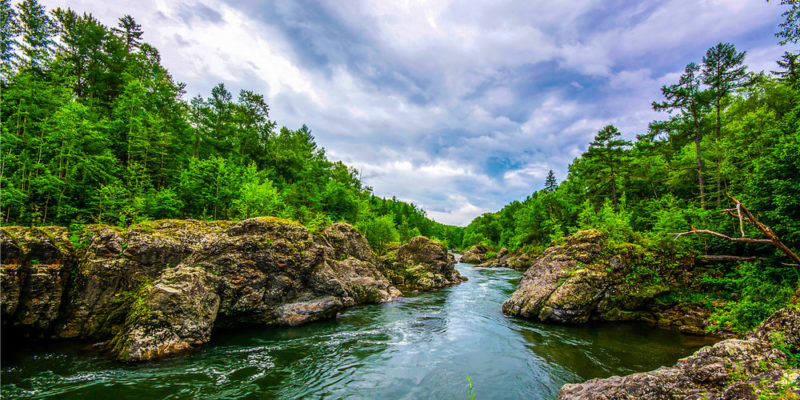We explain what natural regions are, how they are classified and their political distribution. In addition, its general characteristics and examples.
What are Natural Regions?
Natural regions are certain types of geographic regions, delimited mainly by physical features related to relief , and to a lesser extent by climate , vegetation, hydrography, and other local aspects.The term natural region is generally used as more or less synonymous with other forms of geographic classification determined by climatological or orographic conditions ( relief ), but in reality the limits of one region and another are conventional and difficult to define scientifically .
It is, in any case, a set of regions in which a territory can be organized, taking into account its various biotic and ecological aspects.
Concept of natural regions
Natural region is generally understood as the set of territorial units determined by relief, climate and vegetation . It is, however, a broad criterion and often used with changing criteria, but it serves to divide a territory into more or less homogeneous regions for study.
Types of natural regions
 There may be different classifications for natural regions, but mainly we talk about:
There may be different classifications for natural regions, but mainly we talk about:
- orographic regions. Those in which the criterion of relief is met.
- climatic regions. Those in which the frequent climatological record is attended.
- Phytogeographic regions. Those in which the predominance of some plant species over others is taken into account.
orographic regions
 The natural regions, classified according to the form of relief that prevails, can be:
The natural regions, classified according to the form of relief that prevails, can be:
- Mountain regions. The great mountain ranges and elevated areas, such as the Alps, the Andes , etc.
- plain regions. Essentially long, low-lying plains, such as the Argentine Pampas, the Venezuelan plains, and the Siberian tundra.
- plateau regions. Plains too, but located at a height, such as the Andean plateau, the Tibetan plateau or the Venezuelan Guyana.
- hilly regions. More or less flat regions but with low elevations, such as the English Midlands.
- desert regions. Those in which the intense climate predominates and there is usually the presence of dunes and sandstone.
climatic regions
 The natural regions classified according to the predominant climate are understood based on climatic bands or “zones”, which are:
The natural regions classified according to the predominant climate are understood based on climatic bands or “zones”, which are:
- warm area. The one located around (above and below) the Earth 's equator . High but stable temperatures and little thermal variation predominate , as well as abundant humidity.
- Temperate zone. Located both north and south of the warm zone, it is characterized by having seasons (unlike the warm one), and high thermal variations.
- Cold or polar zone. The areas located around the poles , with a mostly cold climate and long and cruel winters, with little solar incidence due to the tilt of the Earth's axis.
Phytogeographic regions
 These natural regions are classified according to the predominant plant formations, and can be:
These natural regions are classified according to the predominant plant formations, and can be:
- scrub regions. Those areas with a dry climate where xerophytic vegetation and evergreen thick-leaved shrubs predominate.
- Chaparral regions. Typical of extreme climates, with hot, dry summers and cold winters, generally with sparse and low-lying vegetation.
- savannah regions. Plains with high annual rainfall and intertropical climate, suitable for agriculture and suitable for grassland vegetation.
- Wooded regions. Mountain or piedmont regions , in which there are cold winters and hot summers, with good biodiversity and in which high-altitude coniferous forests predominate.
- jungle regions. The areas with the greatest biodiversity, both plant and animal, are the tropical rain forests, where the vegetation is tall and has a leafy crown, a lot of variety and a long life. They are usually located in the tropics.
hydrographic regions
 Natural regions can also be classified according to their hydrographic presence, whether it is:
Natural regions can also be classified according to their hydrographic presence, whether it is:
- Coast zones. That border the sea and present port activity.
- lake areas. With the presence of lakes and lagoons, long stretches of still water.
- mangrove areas. Where swamps and mangroves abound, waters with a rich presence of organic matter.
- River areas. River or stream areas , in which the mass of water is in constant movement.
Political distribution of natural regions
The classification of natural regions usually depends on the country whose territory is to be organized into regions, since it is part of the way in which it understands its own territorial presence and organizes its economic activities, such as agriculture or tourism .
Variety of natural regions
 Natural regions present a wide variety throughout the world, especially in regions with a great variety of relief or the presence of microclimates . The greater the variety of natural regions, the greater the biodiversity of a given region and therefore the possible use of them.
Natural regions present a wide variety throughout the world, especially in regions with a great variety of relief or the presence of microclimates . The greater the variety of natural regions, the greater the biodiversity of a given region and therefore the possible use of them.
Ecosystems of natural regions
Natural regions are characterized by presenting, in their territorial cut-out, one or several ecosystems, such as marine, coastal, jungle, etc. These ecosystems are, as their name indicates, an interlocking system of dependency relationships between various animal and plant species.
Fauna of natural regions
 The presence of animals is more or less uniform in all natural regions, although in some such as jungle, forests or maritime areas, they are particularly abundant . However, few natural regions show a partial (or even less total) absence of animal presence.
The presence of animals is more or less uniform in all natural regions, although in some such as jungle, forests or maritime areas, they are particularly abundant . However, few natural regions show a partial (or even less total) absence of animal presence.The above content published at Collaborative Research Group is for informational and educational purposes only and has been developed by referring reliable sources and recommendations from technology experts. We do not have any contact with official entities nor do we intend to replace the information that they emit.
Passionate about understanding and contributing to a world that does not stop changing. New forms of Work, Sustainability and Technology. For many years he has worked as a creative for large international companies. He has a Ph.D. in information technology and he has been doing quantitative research in the interdisciplinary areas of information systems, cyber security, data analytics and artificial intelligence. He continue to look for creative solutions through technology to help companies to be more humane and sustainable..
Leave a reply
Your email address will not be published. Required fields are marked *Recent post

Sport: What Is It, Types, Risks, Features, Characteristics and Examples
September 23, 2021

Dogs: Emergence, Features, Characteristics, Feeding and Breeds
September 24, 2021

Story: Definition, Elements, Structure, Features and Characteristics
September 24, 2021

Essay: Definition, Structure, Features, Characteristics, How to Do It
September 24, 2021
